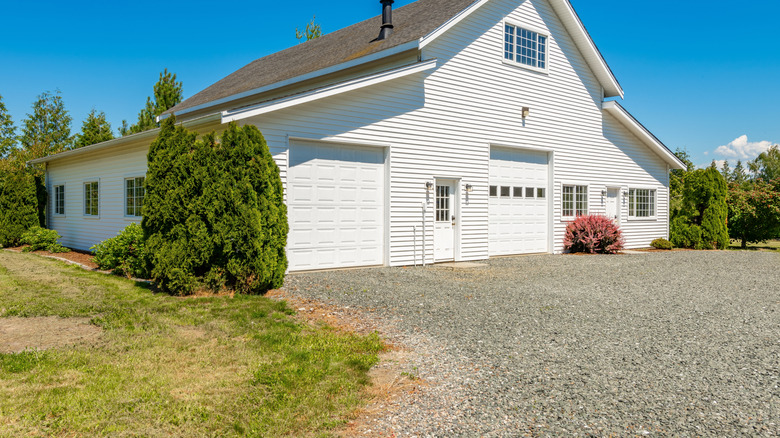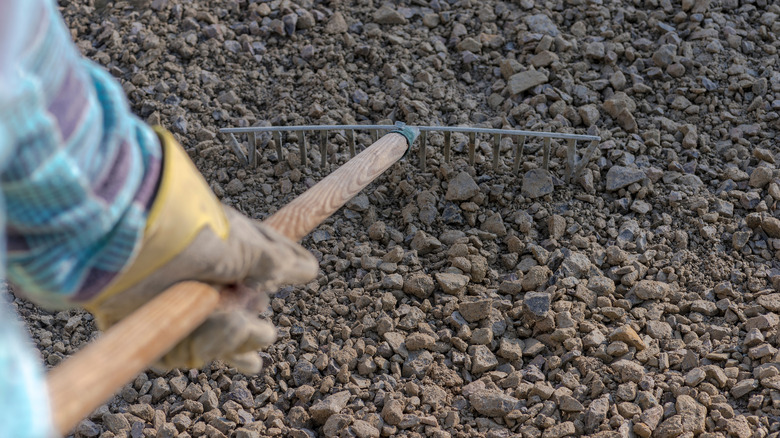The Lasting Solution That Will Keep Your Gravel Driveway Fixed In Place
Gravel is one of the cheapest materials you can use for your driveway, and it's also easy to install. Besides the rock itself and a few essential tools you'll need for gravel installation, there isn't much else required for this DIY driveway installation. This type of driveway gives your property a timeless appearance that complements almost any style or home design you've got going. However, despite all these benefits, gravel driveways still have their own share of cons. A major issue is that the gravel in these driveways isn't fixed in place, unlike asphalt or concrete — and the drive's displacement can worsen, particularly if the gravel isn't deep enough.
When heavier cars move along your gravel drive, they displace the stones. Over time, that creates ruts and grooves that could become unsightly potholes. Loose gravel doesn't just look messy; it can become a safety hazard. It can make driving and walking on them difficult, especially for people with mobility concerns. While gravel will likely constantly shift at the top layer, this shifting could become worse if the depth of gravel in your driveway is insufficient. A telltale sign that your gravel might not have been laid thick enough is if it takes less time to develop these ruts or requires more frequent maintenance.
Deeper gravel driveways are more stable
One sorely overlooked aspect of gravel driveway installation is the total depth of the drive. And no, we don't simply mean being mindful of the depth of the top layer of gravel. That's one of the many mistakes people make when incorporating gravel in their driveways. You only need about three inches of gravel for the top layer. That is thick enough to compact the gravel, but not so thick that the top stones become loose and start spreading. It's the depth of the entire driveway, a deeper excavation during the initial driveway construction will provide a deeper sub-base, and essential if if you're trying to prevent rutting. This is because this layer carries the weight of any heavy vehicles, preventing gravel shifts due to weight displacement.
Now, the total depth of your driveway should be about 12 to 18 inches. This means three to four inches for the top layer and the rest for your sub-base. Since most gravel driveways have three layers, the sub-base is divided into the middle and base layers. The base layer consists of gravel three to six inches in diameter, while the gravel diameter in the middle layer should be two to three inches. These layers are responsible for the load-bearing and foundational aspects of your driveway, respectively. Tamp and pack each layer individually, and you'll end up wit a lovely driveway that won't spread. Remember to select the best types of gravel for both your sub-base and the top layer, as your choice can impact how much your gravel will spread.

